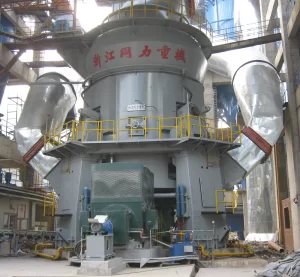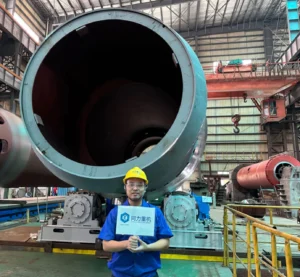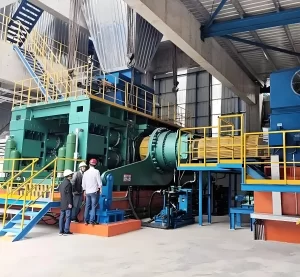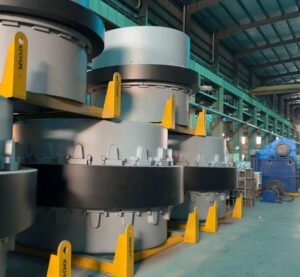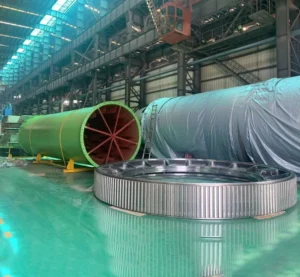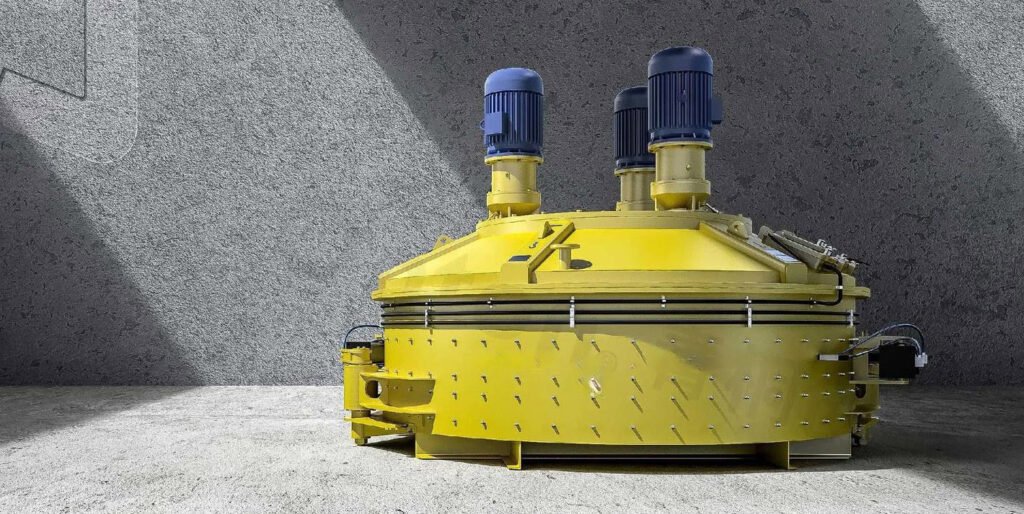
In any construction project, quality concrete is essential for strength, durability, and longevity. At the heart of producing reliable concrete lies one key tool: a commercial cement mixer. Whether you're building a foundation, pouring a driveway, or completing a large commercial project, understanding how a commercial cement mixer works will help you understand its importance in delivering consistent, high-quality results. We know that the right tools and techniques are essential, and cement mixers are where it all starts. Commercial cement mixers are heavy machinery and equipment that are indispensable in the field of construction. They are mainly used to mix raw materials such as cement, sand, and water in specific proportions to make concrete that meets construction requirements. Its efficient and stable working performance has greatly improved the construction efficiency and quality of construction projects. This mixer ranges from large truck-mounted mixers to small portable mixers.
A typical commercial cement mixer uses a rotating drum to mix the various ingredients. For small-scale projects, portable concrete mixers are often used to make concrete on site, giving workers plenty of time to use it before the concrete hardens.
Definition and Function of Commercial Cement Mixer
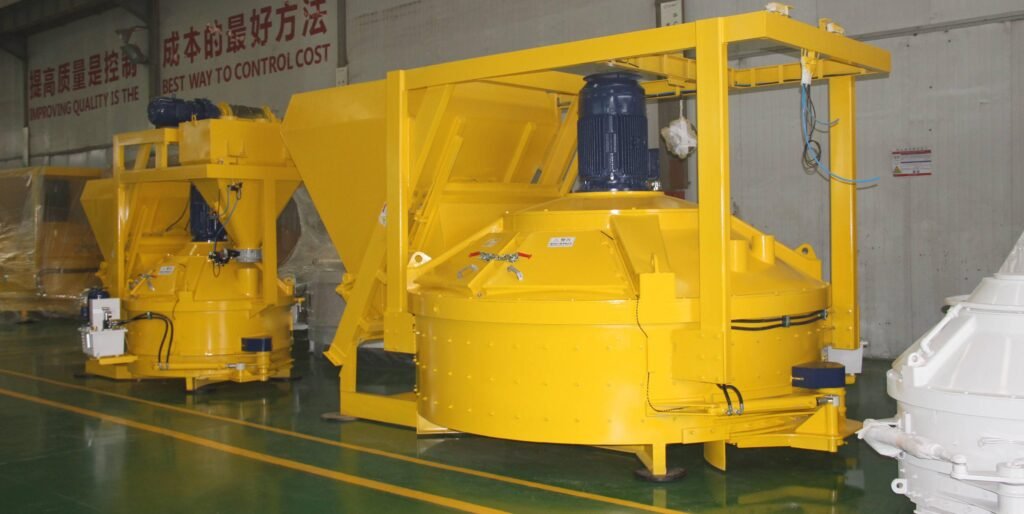
Definition
Commercial cement mixer is a mechanical equipment used to mix cement, sand and gravel aggregates, water and other materials into concrete mixture. It is a construction machinery. Through the rotating mixing drum and internal blades, cement, sand and gravel aggregates, water, admixtures and additives are mixed in a specific proportion to form a concrete mixture.
Function
Commercial cement mixer can efficiently mix various raw materials, improve the quality of concrete and the consistency of product performance, avoid the unevenness and labor intensity of manual mixing, thereby improving the efficiency and quality of concrete production. The specific functions are as follows:
Mixing materials : Commercial cement mixer can mix cement, sand and gravel aggregates and water and other materials evenly to form a concrete mixture. Its working principle is based on the forced or self-falling mixing method of the rotating mixing drum and internal blades to ensure that the materials are evenly mixed and meet the concrete quality requirements of different engineering projects
Improve engineering quality : Through the efficient mixing process, the cement mixer can ensure the quality and strength of concrete, thereby improving the stability and durability of the building.
Widely used: Commercial cement mixers are widely used in highway construction, civil engineering, water conservancy facilities and railway construction, and are indispensable key equipment in construction projects.
How Commercial Cement Mixers Work
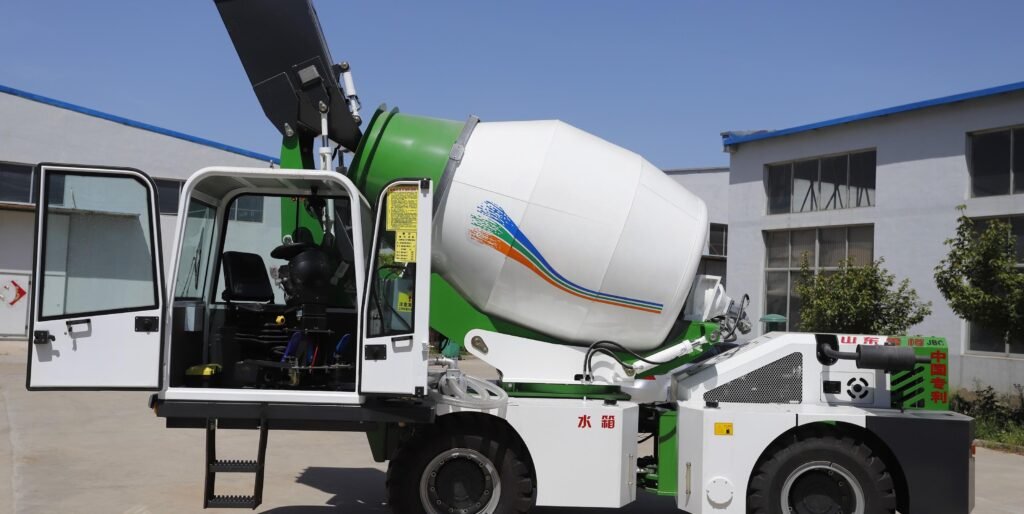
Concrete mixers are designed to achieve a uniform mix of concrete ingredients. The process involves several key steps:
- Loading: Ingredients such as cement, aggregates, water, and any additives are loaded into the mixer in predetermined proportions. The order of loading affects mixing efficiency, and water is usually added first to prevent cement from sticking to the mixing drum.
- Mixing: After the ingredients are loaded, the mixer's drum or mixing chamber begins to rotate. The mixing blades inside the drum lift and tumble the material, ensuring that all ingredients are evenly distributed.
- Mixing: During the mixing process, cement particles are coated with water to form a paste that binds the aggregates together. The mixing process ensures that all particles are evenly distributed, forming a uniform mixture.
- Discharging: After mixing is completed, the mixing drum reverses to allow the concrete to be discharged through a chute. The unloading process must be rapid to prevent the concrete from hardening prematurely.
How Does a Commercial Cement Mixer Work?
The operation of a commercial cement mixer relies on two key components: the mixing drum and the rotating power. Here is a detailed description of how it works:
- Mixing Drum
The mixing drum is the heart of a commercial cement mixer. It is a large cylindrical container with blades or wings inside that help lift and fold the concrete mix as the drum rotates. This constant motion ensures that all ingredients are thoroughly mixed. - Rotation Mechanism
The drum rotates at a controlled speed and is driven by an electric motor, gasoline engine, or hydraulic system. The rotation keeps the mix moving constantly, preventing it from hardening prematurely and ensuring a uniform consistency of the mix. - Mixing Process
The process is generally as follows:
Charging: Cement, water, and aggregates are added to the mixing drum. The ratio of these materials is critical to achieving the desired strength and quality of concrete.
Rotation: As the drum rotates, the blades inside lift the mix upward and then let it fall back, creating a tumbling effect that mixes the materials together.
Unloading: Once the concrete is mixed to the correct consistency, the drum is tilted or the direction of rotation is reversed to discharge the mix where it is needed. - Keep concrete workable
Cement mixers are designed to keep concrete mixing until it is ready to pour. If the mixer stops spinning for too long, the concrete will begin to solidify and become unworkable. This is especially important for projects that require large amounts of concrete.
Types of Commercial Cement Mixers
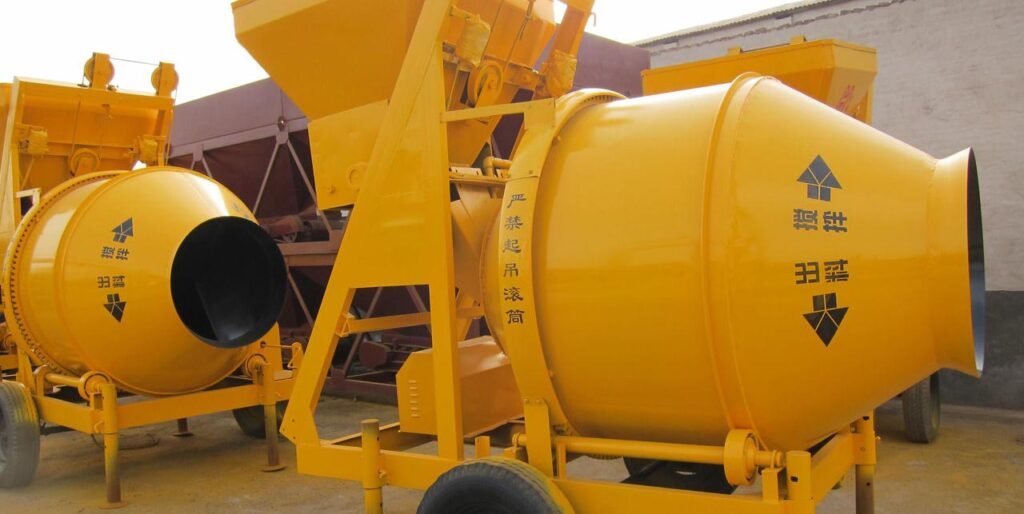
Commercial cement mixers can be broadly divided into several types, each with its own advantages and uses:
- Batch concrete mixers: These mixers produce concrete in batches, usually loaded into a drum or pan. Batch concrete mixers are suitable for small and medium-sized projects and are known for their simplicity and ease of use.
- Continuous concrete mixers: As the name suggests, continuous mixers mix concrete continuously. They are often used for large projects that require a constant supply of concrete.
- Twin-shaft concrete mixers: Twin-shaft mixers have two horizontal mixing shafts, and the mixing blades ensure that the mixing process is thorough and efficient. These mixers are known for producing high-quality, consistent concrete.
- Planetary concrete mixers: Planetary mixers consist of a rotating pan and multiple mixing stars that create a unique mixing action. These mixers are ideal for producing specialty concrete and are popular in the precast concrete industry.
- Reversible drum concrete mixers: The drum of a reversible drum mixer rotates, mixing concrete in one direction, and then reverses to discharge. These mixers are often used on construction sites that require a steady supply of concrete.
- Volumetric concrete mixers: Volumetric mixers can accurately meter ingredients to produce customized batches of concrete on demand. They are popular in remote areas and for mobile projects.
- Truck-mounted mixer trucks: These mixer trucks are also known as ready-mix concrete trucks and are often used in large construction projects. The mixing drum rotates during transport, ensuring that the concrete remains fresh and easy to mix before it arrives at the construction site.
Commercial Concrete Mixer Truck Types
A commercial concrete mixer truck is a special vehicle used to transport and mix concrete while on the move. These vehicles ensure that the concrete remains fresh and does not harden before it reaches the construction site. They are commonly seen on the road, transporting concrete for buildings, roads, bridges, and other infrastructure projects.
It has a large rotating drum mounted on the rear. As the truck moves, the drum rotates slowly, keeping the concrete stirred and preventing it from solidifying. Helical blades inside the drum help to mix the material evenly. When the truck arrives at the construction site, the drum rotates in the opposite direction, dumping the concrete out through a chute.
Some mixer trucks transport ready-mixed concrete from a factory, while others mix concrete on site using dry materials and water. This flexibility allows construction workers to have fresh, high-quality concrete at all times.
- Standard Concrete Mixer Trucks: These trucks carry ready-mixed concrete from the batching plant and transport it all the way until delivery. Ideal for large construction projects where concrete needs to be available quickly.
- Volumetric Concrete Mixers: These trucks transport dry materials individually and mix them on site as needed. Ideal for smaller projects or jobs that require different concrete mixes.
- Front-discharge Concrete Mixer Trucks: Unlike traditional mixer trucks, these trucks pour concrete from the front rather than the back. The driver has more control over the pouring process, making it easier to pour concrete exactly where it is needed. Often used on narrow construction sites where maneuverability is a high requirement.
Why Commercial Cement Mixers Are Essential for Quality Concrete
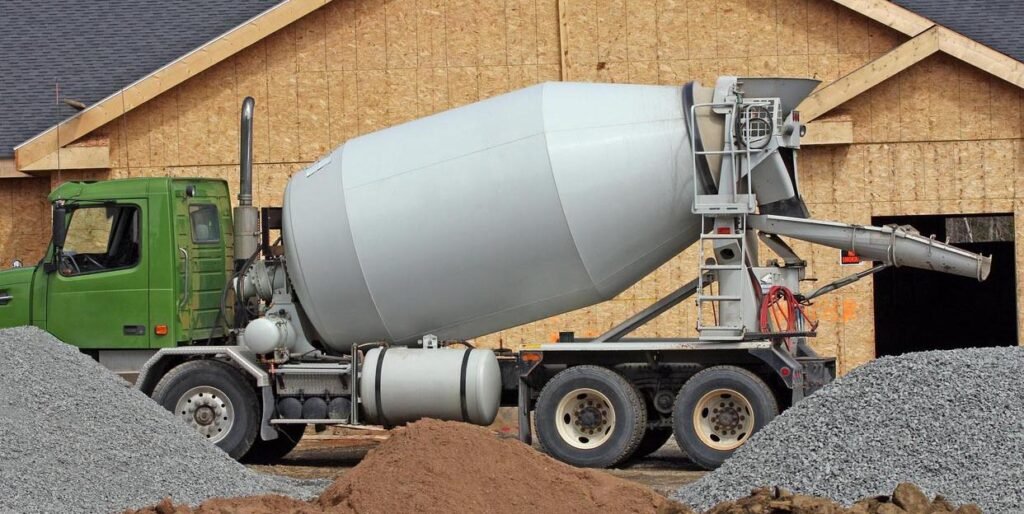
Commercial cement mixers ensure that the concrete you use meets the necessary quality standards. Here’s how:
- Continuous mixing: Cement mixers thoroughly mix cement, aggregates, and water, preventing lumps and ensuring the mixture is a uniform consistency. You simply can’t achieve the same precision and quality with manual mixing.
- Time efficiency: Mixing concrete by hand is laborious and time-consuming. Cement mixers streamline the process, allowing you to mix large batches of concrete quickly and efficiently.
- Prevent premature hardening: The continuous motion of a cement mixer keeps the mixture fresh and easy to work with, giving you plenty of time to pour and shape the concrete before it sets.
- Better control over proportions: Using a cement mixer makes it easier to measure and maintain the correct proportions of cement, water, and aggregates—a key factor in determining the strength and durability of the final product.
Features of commercial cement mixers
- Efficient production: Commercial concrete mixers can process a large amount of raw materials in a short time and quickly produce a large amount of concrete to meet the needs of large-scale construction projects. Large mixing plants can produce hundreds or even thousands of cubic meters of concrete per hour.
- Good workability: Through reasonable mixing methods and mixing time, the concrete has good workability, that is, the concrete mixture is easy to mix, transport, pour and compact, which can better fill every corner of the formwork and improve the quality and density of the concrete structure.
- Strong durability: Key components such as the mixing drum and mixing blades are made of wear-resistant materials, which can withstand long-term wear and impact and have a long service life. At the same time, the structural design of the whole machine is reasonable and high-strength, which can adapt to harsh construction environments and high-intensity work tasks.
Considerations for choosing commercial cement mixer type
Choosing the right concrete mixer requires analyzing a variety of factors to ensure the equipment effectively meets the needs of your project. Here are some key considerations:
Project size
- Small projects: For residential or small-scale construction, a small mixer, such as a portable drum mixer, is usually sufficient.
- Large projects: Continuous mixers or large-capacity batch mixers are ideal for large infrastructure projects such as bridges or highways.
Type of concrete required
If the project requires high-quality concrete with consistent performance, a pan mixer or twin-shaft mixer will be more effective.
For standard concrete mixes, a drum mixer or transit mixer is usually sufficient.
Location and accessibility
If the site is remote or space is limited, a portable mixer or a volumetric mixer that can mix on site is more practical.
Urban areas with easy access to concrete batching plants may rely more on concrete mixer trucks to produce ready-mixed concrete.
Mix speed
Projects that require rapid concrete pouring should use a high-speed mixer, such as a twin-shaft mixer or planetary mixer.
For less time-sensitive applications, a standard drum mixer is sufficient.
Budget
For cost-conscious projects, a standard drum mixer or portable mixer is an economical choice.
Specialized mixers, such as twin-shaft mixers or volumetric truck mixers, may involve higher upfront costs but can save operational efficiency in the long run.
Volume and frequency of use
Continuous mixers or large-capacity batch mixers are good for high-volume, repetitive mixing operations.
Small portable mixers or pan mixers are better suited for intermittent, low-volume needs.
Advantages and Disadvantages of Different Commercial Concrete Mixers
| Mixer Type | Advantages | Disadvantages |
| Drum Mixer | Easy to operate; affordable and widely available; suitable for most projects | Limited to smaller volumes; may not produce highly uniform mixtures |
| Pan Mixer | High mixing consistency; suitable for precast concrete; versatile for various applications | More expensive than drum mixers; requires regular maintenance |
| Twin-shaft Mixer | Fast mixing time; high mixing uniformity; ideal for large-scale projects | Expensive equipment; high power consumption and maintenance required |
| Continuous Mixer | Efficient for large-scale projects; continuous concrete supply; suitable for remote areas | Less flexibility in mix design; requires skilled operation |
| Volumetric Mixer | On-site mixing; reduces waste; allows flexible mix design | High initial cost; requires skilled operator to adjust mix proportions |
| Concrete Mixer Truck | Easy transportation; keeps concrete fresh during transit; suitable for most construction sites | Depends on batching plant; limited capacity per trip |
Conclusion
Choosing the right commercial cement mixer requires balancing factors such as cost, efficiency, project requirements, and quality. Each type of mixer has its advantages and limitations. Understanding these can help you make an informed decision. The ideal choice ensures that concrete is mixed and delivered efficiently, thereby improving the overall success of the construction project. Commercial concrete mixers play a key role in building construction, mixing the basic ingredients of concrete to build the buildings around us. Understanding the types of mixers, how they work, and maintenance and safety considerations is crucial for anyone involved in building construction. As technological advancements continue to shape the industry, staying up to date is key to realizing the full potential of these machines.

